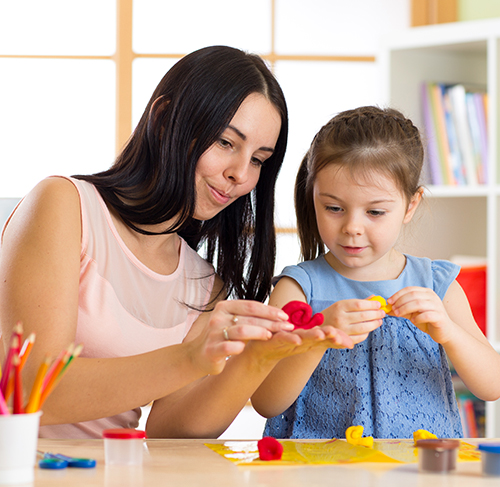Have you ever noticed your child repeating certain words or phrases? Moreover, you cannot seem to figure out what those utterances mean because in many cases they don’t seem to serve any meaningful intent like making a request or asking for help. If you have found yourself in this predicament, I have some good news for you. This form of oral expression is called echolalia and your involvement as a parent can help your child transition from these verbal behaviors to practical forms of communication.
What is echolalia?
Echolalia can be defined as a way of parroting the speech output of others without understanding the purpose behind language (Prizant & Rydell, 1984). It is important to note that verbal repetition is a common phenomenon. Typically developing children repeat the utterances of others (Blanc,2012; Fay, 1967a; Peters, 1983) to varying degrees. However, echolalia is one of the most noticeable signs of autism spectrum disorders (Stiegler, 2015).
Why do children produce echolalia?
Children use this type of speech for some of the following reasons (Prizant & Rydell, 1984):
- Echolalia serves as a repetitive behavior known as “stimming”.
- Echolalia can be triggered by an object, person, or activity.
- The child is rehearsing the word or phrase before saying it (via whispering).
- Helps the child manage his motor functions to direct his own movements.
- The child is naming objects.
- The child is trying to turn-take during an activity.
- The child is expressing that he is finished with a verbal exchange.
- The child is offering new information from a past situation.
- This is the child’s way of saying “yes”.
- The child is requesting for something.
- The child is expressing discontent.
- The child is trying to get an adult to perform an action.

How can I help my child go from using echolalia to functional communication?
Please refer to the following guidelines on how to respond to echolalia (Stiegler, 2015):
- Encourage your child to initiate an interaction. For instance, place a highly desirable item where it is inaccessible to your child. Wait for your child to use a preferred way of communicating to make a request. If your child is only able to sign “give me” then start with this form of communication. Another approach is giving your child a toy that appears broken or a jar that he cannot open on his own. Then wait for your child to indicate that he needs help. This process will look different depending on your child’s current level of functioning.
- Become an investigator. Observe your child and try to determine why your child is using certain verbal repetitions. For example, when your child keeps asking, “Do you want a ball? this could instead mean that he wants a ball. If your child is repeating “yes sir” as he is playing with a toy sheep, it could be the case that he heard this phrase from the Baa Baa Black Sheep song. In this case, the toy sheep simply served as a trigger to generate this phrase.
- Create an environment that is playful and reduce demands. Make comments (e.g., look at the bubbles, I like how you’re coloring) and use exclamations (e.g., wow, yaay) rather than asking too many questions or directing the child to perform an action. When you’re only asking questions like “what’s that?”, you’re limiting his conception of language to merely naming objects. Additionally, your child might implicitly learn that in a communication dynamic, his only role is to respond rather than start an interaction.
- Teach skills based on knowledge that your child already has. For example, if your child is familiar with recognizing and naming colors, you can build upon this concept by introducing activities involving block shapes. If your child can name a variety of fruits, next step could be introducing verbs like “wash”, “cut”, and “eat” during a simple play activity where you demonstrate these actions.
- Practice developmentally appropriate ways to communicate. If you are teaching your child to request for things like toys or edibles, use phrases like “I want ____” or “Give me___”. Although this wording is not as polite as “May I have ___ please”, the shorter utterance might be more developmentally appropriate for your child. The longer phrases might be harder to understand and use.
Instead of viewing echolalia as an obstruction to language development, you can see it through a different lens. By reacting to your child’s verbal repetition in new ways, you can help promote communication in ways that will help your child interact effectively and appropriately. If you would like to ask our expert about the topic, get in touch with us. Follow us on Facebook, Instagram, LinkedIn, and Twitter to stay on top of our latest updates.
References:
Blanc, M.(2012).Natural language acquisition on the autism spectrum: The journey from echolalia to self-generated language.Madison, WI: Communication Development Center.
Fay, W.(1967a). Childhood echolalia: A group study of late abatement. Folia Phoniatrica, 19,297–306.
Peters, A. (1983).The units of language acquisition.New York: Cambridge University Press.
Prizant, B. M., & Rydell, P. J. (1984, June). Analysis of Functions of Delayed Echolalia in Autistic Children. Journal of Speech, Language, and Hearing Research, 27(2), 183–192. https://doi.org/10.1044/jshr.2702.183
Stiegler, L. N. (2015, November). Examining the Echolalia Literature: Where Do Speech-Language Pathologists Stand? American Journal of Speech-Language Pathology, 24(4), 750–762. https://doi.org/10.1044/2015_ajslp-14-0166






Deja Un Comentario